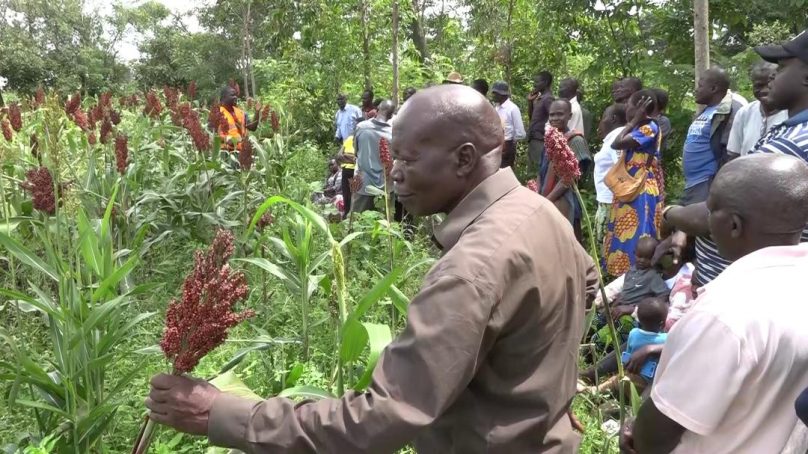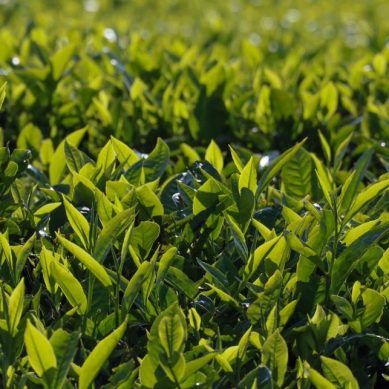
When he retired from teaching in 2019, Wilson Alunda Nyaoro settled down to farming. But it was not an easy choice.
Nyaoro, who hails from Ndere village in North Gem location, Siaya County, tried his hand at several crops including maize, but they all were capital intensive and returns were dismal.
When a team from Cereal Growers Association and Kenya Breweries Limited visited Ndere to promote sorghum and millet farming, the former teacher did not hesitate to join a group that was formed by village-mates to try their hand at growing the once popular crop, which had been abandoned and replaced by maize in the larger Nyanza region.
“This is my first time to grow millet. It may not be good but I am trying,” he said during a field day organised in his farm.
Nyaoro who says that he planted a bit early when there were no rains, pledges to double his efforts during the next season, adding that he was expecting more money once he harvests and sells his produce to KBL that has guaranteed him and other farmers a ready market.
Nyaoro is not alone. In Ndere, several farmers, among them Mary Akinyi Odhiambo and Yahuma Okoko have joined the race towards reviving sorghum and millet farming.
“Millet is good as it also helps fight hunger at household level,” says Mary Akinyi Odhiambo. She said she needs just a small amount to mix with maize and cassava for her family to enjoy a sumptuous, healthy meal.
She says that the current variety that is being promoted in the area has better yields and is not liked by birds, the main challenge to the farmers. For Yahuma Okoko, millet growing is the in thing as it does not only assure them of money in the pocket but also ensures that they live healthy and for long.
“It is medicinal. Old men who use it in their diet live for long,” says Okoko, adding that it is good for diabetic patients compared with maize.
Okoko appealed to Kenya Breweries Limited to consider supplying farmers with fertiliser and seeds in loan form that will be recovered when they deliver produce to the company. The patron of sorghum farmers, Engineer Sam Opot, hailed the initiative and advised local farmers to leverage KBL’s initiative to increase production and improve their socio-economic wellbeing.
Opot said the reintroduction of the crop in the area through support from the beer manufacturing company saw local farmers earn Ksh3 million last season.
“We started with 60 farmers who produced 76 tonnes. The harvest was bought by Kenya breweries for Ksh3 million,” he said.
Opot said that the number of farmers has now increased to 1,000, spread across Nyabeda, Asayi, Sirembe and Got Regea sub-locations. He urged local farmers to take advantage of the ready market to venture into sorghum farming.
Nyabeda sub-location assistant chief Tom Aruwa led residents in appreciating the reintroduction of the crop in the area, saying that it has helped ensure food security.
“With the ready market, money will be in the pockets of the farmers and this will address both food and general security in the area,” he said. “Diseases like diabetes will be a thing of the past.”
Kenya Cereal Growers Association Field Officer James Oduori urged Siaya farmers to take up sorghum and millet farming as a source of income given that there is an assured market.
“Farmers must ensure that they have enough cereals for both domestic and commercial use,” said Oduori.
He promised that the CGA will ensure that they get the best harvest for the market. His sentiments were equally shared by Kenya Breweries Limited’s field officer, Collins Onyango Magaga, who said the company will continue assisting farmers with seeds and teachings on the best agricultural practices for maximum yields.
According to nutritionist with Kenya Medical Training College Nairobi Samuel Maina, millet ugali has high fibre content which helps prevent spikes in blood sugar after meals. This means millet raises one’s blood sugar gradually.
Agricultural research scientist Chris Ojiewo said it is now widely accepted that eating whole grains can help one lose weight. Dr Ojiewo who is in charge of strategic partnership and seed systems for dryland crops programme at the International Maize and Wheat Improvement Centre (CIMMYT) advised Kenyans to embrace millet and its related products to tackle soaring obesity rates and enhance food nutrition.
Recognizing the urgency of the situation, experts in food security are now focusing on millet as the best food crop to combat the problem. Ojiewo said millet is the answer to keeping at bay many lifestyle diseases. Millet, with its adaptability to dryland conditions and high nutrition value, has the potential to play a critical role in combating obesity and diabetes by improving overall nutrition, he explained.
Despite the many health benefits of millet, currently production in Kenya remains significantly low. Kenya imports a significant portion of its millet from neighbouring Uganda and Tanzania, despite having the capacity to produce the crop locally. The need for diversification becomes apparent as heavy reliance on maize, wheat and rice leaves farmers vulnerable to catastrophic crop losses due to unpredictable weather patterns.
As a versatile grain, millet can thrive in regions with high temperature and limited rainfall thus making it a viable option for areas where traditional cereals, like maize struggle to survive. Eastern and north-eastern Kenya, often overlooked due to misconception about the harsh climate, could potentially benefit from millet production, says Ojiewo says.
Millet production in agribusiness can improve food security, support sustainable agriculture, promote healthy diets and provide a potential source of income for youth and women. Integrating millets into school feeding programmes can improve children’s nutrition and brain development.
The increased demand for millets, even in urban supermarkets, shows their growing popularity. Additionally, exploring value-added millet products, could open up new markets and boost overall production and economy.
- A Tell Media / KNA report / By Philip Onyango







